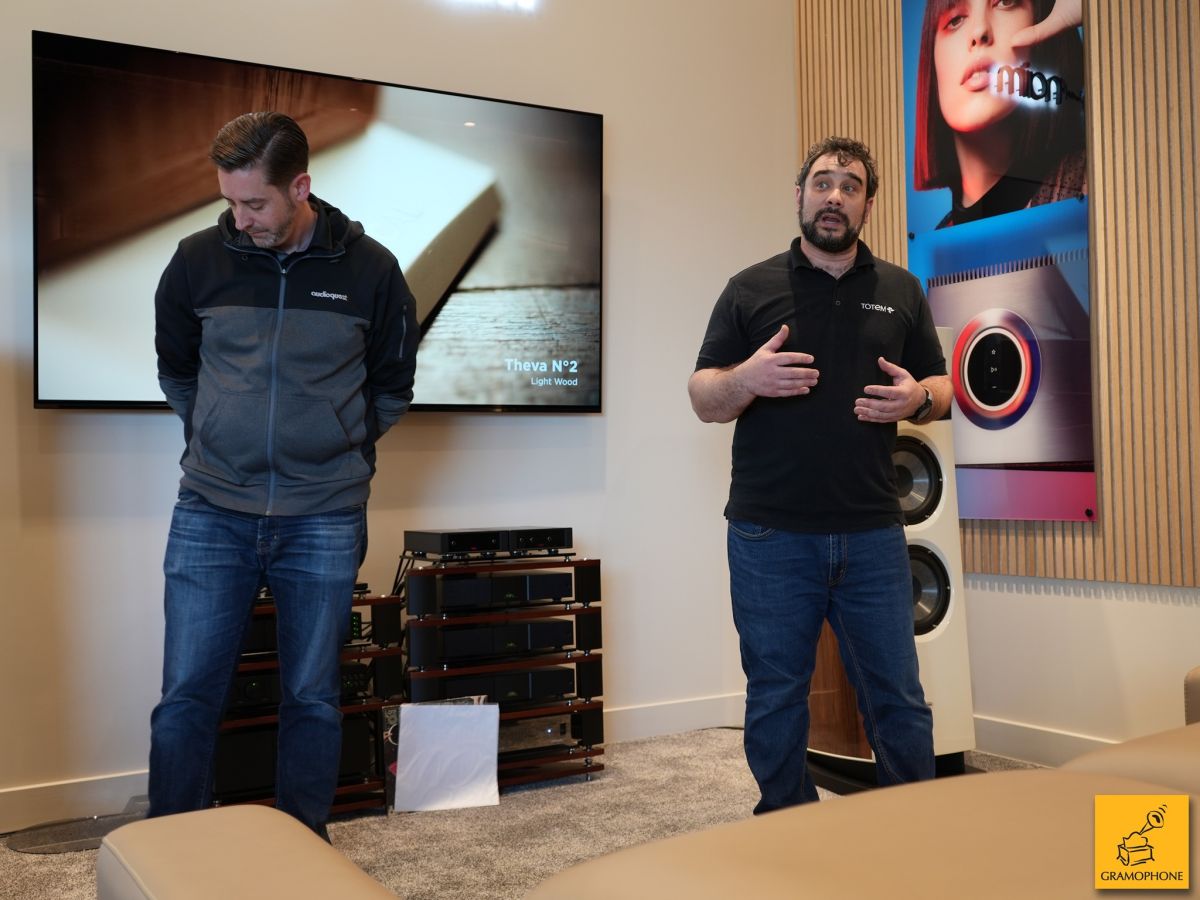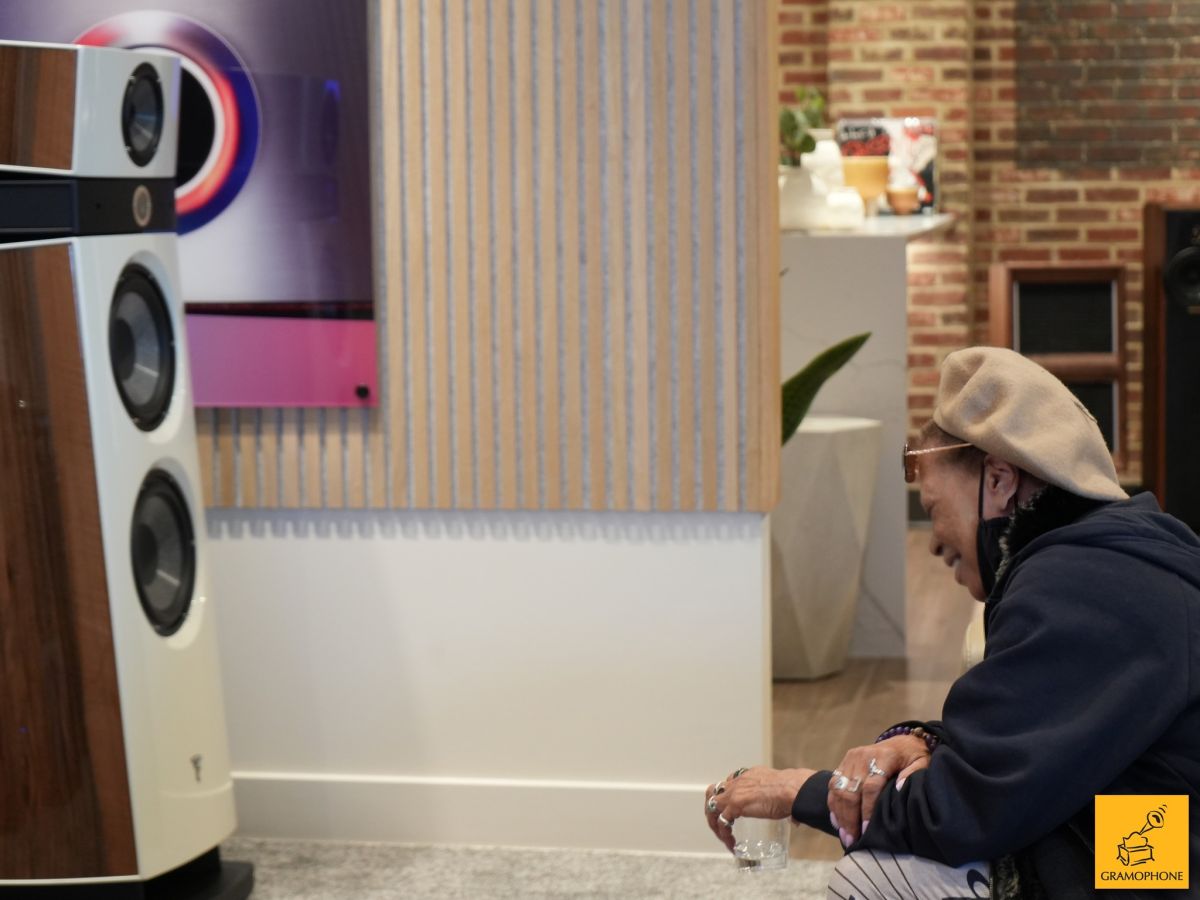- 05.07.2024
- leticia
- About Gramophone Events & Promotions Inspiration Music Throwback
Maryland HiFi Listeners at Gramophone!

When you think of music, and your favorite musicians, who rises to the top of your list? Matchbox 20, Pink Floyd, a fine symphony orchestra, Earth, Wind & Fire, Lady Gaga, Miles Davis, Garth Brooks… or one of my favorites, the Dixie Dregs? As much as we all focus on the stereo and home theater equipment that brings us the music, what really drives our passion is simple: hearing our favorite tunes.
At Gramophone, we strive to always remember that music is what our hobby is all about. Recently we’ve begun a new series of events: the Maryland HiFi Listener’s Evening, the brainchild of two salespeople in the Timonium store, Joe Moscatell and Ryan Lukas.
The idea is simple. Pick your favorite record or two off your shelf, and get together with other, like-minded music fans at Gramophone, for an hour or two of having fun, and sharing each other’s favorite songs. We pick a great-sounding system, have some munchies and a beverage, and play some of your favorite music. In other words, you, our customers, are really driving the content of the event.
Join our Facebook Group and be part of the conversation!
The really cool thing about all this is that even if a song is not your favorite, you’ll likely be hearing it as though for the first time, and you may discover that you like it. Really high–quality audio has an inspiring quality of revealing things on the record that you may not have heard or noticed before. It’s all kinds of fun to hear a song that may not have done much for you before… yet suddenly captures your imagination, simply because it sounds so darn good on a good quality high-end audio system.
We plan to hold these events on the first Saturday of each month, from 4 – 6 pm. Our first event took place at Gramophone’s Experience Center in Timonium Maryland in April 2024. Our participants gave us a most enthusiastic thumbs-up… and why not? Who doesn’t like fun and great-sounding music, played on a terrific audio system?
The audience participation part of the program, with our customers bringing their favorite albums and songs by their favorite artists, enhances the music experience that we all can share.
We hope you can join us at our next event, this Saturday, May 11th, again at the Timonium Experience Center. We’ll showcase the Sonus faber Aida system powered by McIntosh, in a vinyl vs. digital evening. Come on down, bring your favorite tunes, and have some fun with like-minded listeners – at Gramophone! RSVP today!
Here is a brief history of vinyl records:
1870’s: the groundwork for vinyl is laid with inventions like Thomas Edison’s phonography. Invented in 1877, it was the first machine that could record and play back sound. These early recordings used cylinders wrapped in tinfoil, not vinyl… which would not come until decades later. The phonograph was powered by a crank mechanism, which the user had to turn manually throughout the recording and playback process. While that might sound like a hassle, the technology was completely revolutionary for its time, and it laid the groundwork for the turntable that came after it.
1890s-1940s: Emile Berliner invented the gramophone in 1888, which used flat discs instead of cylinders. Edison may get the credit, but Berliner’s Gramophone is far more similar to the modern record player than the cylinders Edison used. These early discs were made of shellac, a brittle material derived from lac bugs. Shellac records were limited in playing time and sound quality, but they remained the dominant format for several decades. These records were played at 78 revolutions per minute, and as they could only hold a few minutes of music, they eventually became for the most part obsolete.
1930s: The first vinyl discs are introduced in the 1930s, made of polyvinyl chloride (PVC). These early vinyl records were not a huge success, as the Great Depression was not yet in the rearview mirror and consumers were slow to embrace the format. But they laid the foundation, as they paved the way for longer playing vinyl records.
1948: Columbia Records (aka CBS) introduced the Long Play (LP) record in 1948. This 12-inch vinyl record played at 33 1/3 rpm, offered much longer playing times than shellac discs. Shortly after, RCA Victor introduced their own 7-inch vinyl record at 45 rpm, offering singles in a more compact format. These two formats, the LP and the 45 rpm single, became the standard for vinyl records.
1980s-Present: The introduction of cassette tapes and then CDs in the late 20th century led to a decline in vinyl’s popularity. However, vinyl never completely disappeared, and in recent years there has been a resurgence of interest in vinyl records. Back in 2006, sales of vinyl records showed an uptick, and both vinyl records and the turntables on which to play them have increased in sales every year since. People appreciate the warmer sound quality and the ritual of listening to music on vinyl.




